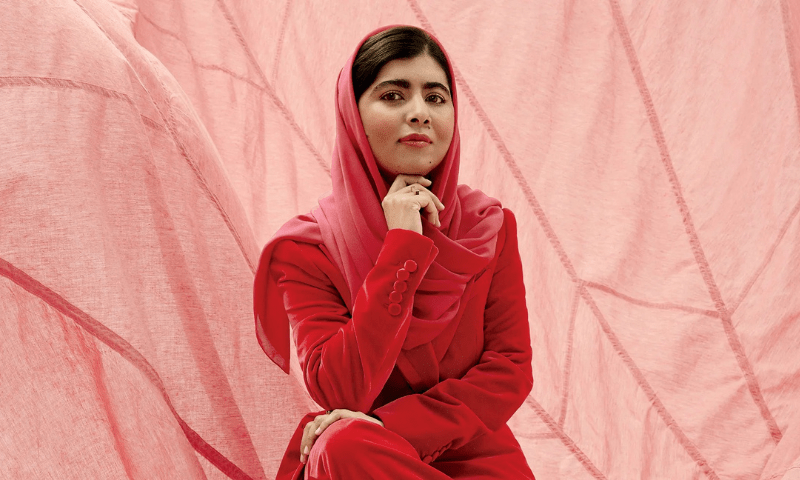People of Hazara urge women to learn gatka, a traditional martial art, for self defence
Gatka, the traditional martial art skill of stick-fighting between two players simulating sword fight, is one of the popular cultural sports of self-defence in Hazara division of Khyber Pakhtunkhwa.
The skill is practiced by players from different age groups during wedding ceremonies and cultural festivals in parts of Hazara division, especially lower and upper Tanawal, plains of Mansehra, Abbottabad, Haripur, Ghazi and Chach areas besides Taxila, Hasanabdal and neighbouring areas up to Punjab.
In the absence of formal training clubs, the skill and expertise of gatka is transferred to young players by their seniors, mostly the family members.
The origin of the word and sport of gatka, played with wooden sticks, is still obscured when and who exactly started using this word or introduced the stick-fighting. Sikhs claim that they introduced the art of gatka in the sub-continent during 19th century while Muslims believe it was started during the early days of Islam, saying gatka stick was then made of a branch of date tree.
According to Shaukat Sultan, a former gatka player from Pandak village, the Mughals introduced and promoted gatka in the sub-continent, which proved that it was the art actually invented by the Muslims. However, historians claim that Hindko, Punjabi and Urdu languages had borrowed the word gatka, also known as Indian martial art or form of jujutsu, from Sanskrit, one of the three ancient languages of sub-continent.
According to Safdar Hussain, a local journalist who has deep study of Sikh era and their traits in Hazara, gatka was further developed and became popular among youths during Sikh era in Hazara from 1818 to 1846.
He believes that owing to frequent wars between the Sikhs and local tribes when one-on-one combat was in vogue the local tribes directed their energies to getting their youth trained on the use of sword for which skills of gatka used to be very important. He said that since then gatka was practiced in Hazara and during the last few years it was getting popular as more and more youth were attracted to this traditional sport.
Gatka, a local name of stick made of Kaoo wood, is usually 3 to 3.5 feet long and half an inch thick with a leather fitted hilt and decorated with multi-colour artificial threads and flowers. The hilt is usually 6 to 7 inches long with leather fitted helping the player to gain strong grip of the gatka.
The other weaponry used in gatka sport is phari or shield. Phari is made of dry leather and round shaped measuring 9x9 inches. It is covered by leather and filled with either cotton or dry grass protecting the hand of the player from full contact hit of the opponent. The pair of gatka and phari cost Rs1,500 to 2,000 which is affordable compared to other sports.
Usually, two players irrespective of their weight and age carry gatka of equal size in the right hand and phari (shield) in left hand. As per rules of the game, each of the players first perform paintra twice empty-handed and then twice with gatka and phari.
Paintra, according to Shaukat Sultan, 62, is all about walking in a zigzag order within the distance of 7 to 8 feet resembling the kata performed by Karate players. Paintra which looks like a mere forward and back steps, is of great importance that determines the expertise of a player.
After empty-handed paintra, he said, the players pick up their gatkas and pharis and perform the same paintra with their weapons. Some players pray before start of the empty-handed paintra while others offer dua at the time of picking up their pairs for fight.
After that both the players perform salami holding gatka in the right hand and phari in left hand by briskly moving the gatka in attacking order and finally lifting it skyward straight as if hitting his opponent. But all this is done in the air. With the final stroke of moving stick skyward both the players bow their heads before each other as a gesture of goodwill. Then the second last step of gatka fight starts when each of the players strikes five times on each other’s gatka.
It (five directional attack) starts from head and goes down to ankles and fifth attack ends in reverse on the stomach or chest of the opponent which both the players perform the same time against each other and their gatkas produce a musical sound of tuck, tuck and tick, tick.
The players then move towards mostly last phase of the fight comprising 13-directional attack wherein the player aims at striking body organs of the opponent, including head, neck, shoulders, arms, forearms, ribs, legs, knees, ankles, chest and naval. This phase of one-on-one stick fight, also starts from right side and goes in up and down sequence targeting the body parts.
Size of the stick has to be equal to opponent’s gatka as even a half of an inch longer stick could give an edge to the wielder which is considered foul play in the game.
Gatka is supervised by two judges on the sides of 15x15ft ring, also known as akhara, who watch closely the movement of sticks during the fight time spanning over 7 to 8 minutes when the players exhibit their fighting skills for winning the contest.
The players show mental agility in a way that even the tip of the opponent’s gatka should not slightly touch his clothes leave aside the full or semi-contact hit on the body parts as slight touching of cloth is a winning point for the triumph or defeat of a player. During the 13-strike fight mostly the game ends when one of the players either lose grip of gatka or phari after getting direct hit or falling of gatka or phari.
Malik Gulfraz 45, a resident of Dheri Sikandarpur who inherited the art from his late father Malik Abdul Rafique said he started learning gatka from his childhood and it took him six to seven years to get mastery over the art of self-defence and forward attack. He said that Haripur, Ghazi, Chach, lower and upper Tanawal and some areas of Punjab were the main hubs where the pupils of his late father were performing gatka and transferring the skill to hundreds of their students.
“A trained gatka player could easily fight against 10 persons at a time,” he said. He lamented that the government had ignored the traditional sports bringing them to the point of vanishing. About the future of gatka, Gulfraz who has his own 50 pupils in different parts of Hazara, said that owing to lack of support from government the centuries old game was vanishing, but a few years ago the youth had once again started evincing interest in it, which was a good omen for the future of this game.
He urged the youth especially girls to learn gatka not only for keeping themselves mentally and physically fit, but also for self-defence.
Originally published in Dawn, March 17th, 2019














Comments